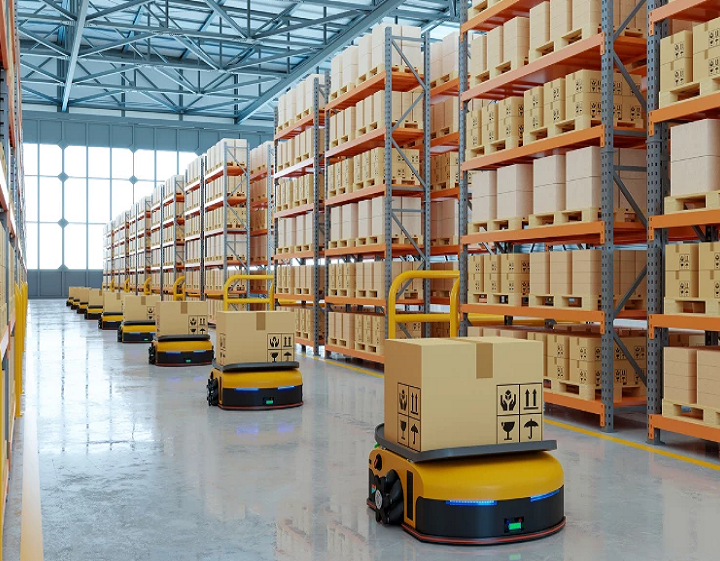The goal of many online small enterprises may be to launch with a simple delivery strategy. They may even think their e-commerce system is equipped with all the tools necessary to handle the entire logistics process. Only a few eCommerce platforms can simultaneously handle B2B wholesale platforms, CRM, ERP, and logistics. The good news is that starting small is okay because you must walk before you can run. However, take time to become familiar with some logistics details once you reach that point.
Strategic shipping alternatives are a tool that the most prosperous business owners use to set themselves apart from the competition and boost profit margins. You need to devise a plan and call it a day, even if the shipping might be a powerful differentiation feature for your brand. You must be ready to move forward regarding operational execution and price strategy.
So let’s examine the essential components of your shipping strategy and what you need to know to implement them.
What is Ecommerce Fulfillment?
The complete order process, from when the consumer places the order until it is delivered to their door, is included in e-commerce fulfillment. Below, you may read more about the many components that make up an e-commerce fulfillment service. Owners of online stores who insist on having complete control over order fulfillment might need more time to be ready to outsource. Consider outsourcing fulfillment if you want to develop your business swiftly while concentrating on what matters most.
What is the Difference Between eCommerce Fulfillment and Warehousing?
Typically, eCommerce fulfillment services manage short-term inventory storage for your merchants. These will be the best-selling items in your eCommerce business, and they must be delivered as soon as possible to meet the degree of efficiency and speed that customers have grown to demand. There are better options for the stock than a fulfillment center for stock that needs to be kept for a lengthy time. As warehouse services are more focused on keeping merchandise than always packing and shipping, they have lower prices for long-term storage.
According to this information, warehouses are often employed for business-to-business (B2B) trade, while fulfillment centers primarily focus on business-to-consumer (B2C) trade. In addition to fulfillment centers or retail storefronts, some warehouses send products directly to clients, making them both B2B and B2C.
What is the Difference Between eCommerce Fulfillment and Distribution?
The definition of a distribution center varies. A distribution facility is not the last link in the logistics chain for most supply chains. During this phase, a package is typically switched from one transportation carrier to another. The following distribution center, fulfillment center, or retail location in the chain receives packages that arrive there. In contrast, when packages reach a fulfillment center, they are unpacked, reorganized, and shipped straight to the consumer. According to this data, distribution centers are primarily B2B, whereas fulfillment centers are primarily B2C.
When Should You Invest in eCommerce Fulfillment Services?
Small business owners could discover that handling order fulfillment in-house is more cost-effective. This is especially true for companies with customized goods or low order volumes. It’s time to invest in inventory management software for wholesale and third-party logistics (3PL) partners when a company’s sales volume makes it challenging to manage order fulfillment promptly. This guarantees a top-notch client experience, prompt delivery, and repeat business from those customers.
What Are the Major Challenges to Ecommerce Order Fulfillment?
The supply chain has its share of difficulties with order fulfillment:-
- Due to pandemic-related problems, the supplier who made the most recent shipment of merchandise for your store might be forced to close.
- Your store’s inventory order may be held up in customs or delayed owing to unforeseeable events abroad in the container leaving Europe.
- There may be a delay in the truck transporting your inventory from the port to the initial distribution point.
- The distribution center between your vendor’s warehouse and the fulfillment center for your online store needs to be more staffed, which would impede the proper routing of your product.
- The order fulfillment facility may lose your goods due to disarray, harm, or theft.
- Any numerous trucks transporting goods from the fulfillment center to their destination could be delayed, lose the package, or suffer other shipping problems.
An issue may impact your company’s revenue at any stage of the order fulfillment procedure. According to the same survey, 21–43% of customers will move to a competitor if an item is out of stock. Additionally, organizations can boost their revenue by 1% if they triple their rate of flawless order fulfillment.
Due to this, the top eCommerce fulfillment services keep track of all vital analytics to guarantee maximum effectiveness. This comprises key performance indicators (KPIs) such as the productivity rates of individual employees, the time it takes from the dock to the stock, the number of orders picked per hour, and the number of lines picked and delivered per hour.
Conclusion
The eCommerce fulfillment procedure used by your company will determine its success. Keep in mind that there are numerous ways to enhance your present fulfillment process to provide a great customer experience. In conclusion, prompt shipping and timely deliveries are practical approaches to raising client happiness and retention.
What Next: So, B2B eCommerce solutions are the future of the e-commerce industry, and if you want to make seamless transactions in your business, you might have to opt for a suitable b2b wholesale platform.






